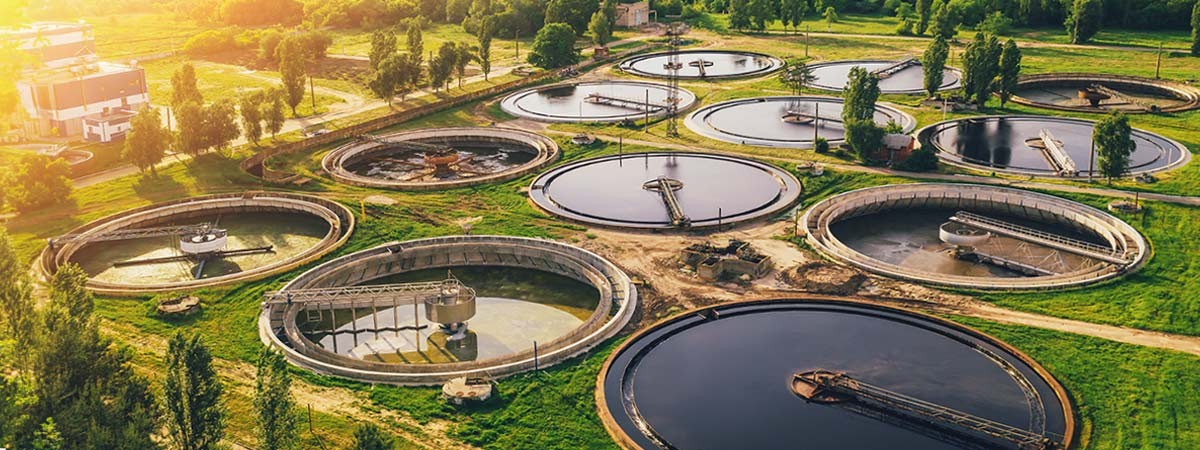City wastewater systems are vast infrastructures. Connecting every house, office and shop with intricate networks of pipes, sometimes up to hundreds of kilometers in length. Whenever a toilet is flushed, a bathtub is emptied, or a faucet is switched on, the resulting wastewater begins a journey through pipes, sewers, and wastewater processing stages before it can finally return to the natural environment.

Overpressure Puts Bacteria to Work
Efficient wastewater processing
Bacteria are the hidden heroes in wastewater treatment. These microscopic helpers, which are naturally present in sewage, help remove dissolved contaminants and make the water safe for reuse. In a municipal treatment plant, blowers from Busch provide the oxygen that helps them thrive.
City wastewater systems are vast infrastructures. Connecting every house, office and shop with intricate networks of pipes, sometimes up to hundreds of kilometers in length. Whenever a toilet is flushed, a bathtub is emptied, or a faucet is switched on, the resulting wastewater begins a journey through pipes, sewers, and wastewater processing stages before it can finally return to the natural environment.
City wastewater systems are vast infrastructures. Connecting every house, office and shop with intricate networks of pipes, sometimes up to hundreds of kilometers in length. Whenever a toilet is flushed, a bathtub is emptied, or a faucet is switched on, the resulting wastewater begins a journey through pipes, sewers, and wastewater processing stages before it can finally return to the natural environment.
Wastewater sampling
Wherever there is a human population, there is wastewater. And wherever there are humans, there are also viruses and diseases. It is therefore logical to use one to examine the other. Wastewater sampling grew in importance during the COVID pandemic to identify hotspots, but the concept has existed for many years. By inspecting wastewater to see which bacteria and viruses it contains, health authorities can identify outbreaks of diseases like polio, cholera and typhoid without relying on the data provided by individual testing. This helps keep an eye on what would otherwise be “blind spots,” such as areas with insufficient healthcare or where testing rates are low. Monitoring can take place at a high level, such as across an entire city, or investigate what is happening in a particular building like a nursing home or school. Undetected spreads of diseases can therefore be identified so that appropriate action can be taken. This allows trends to be mapped and determined, enabling health authorities to be prepared and give the correct guidance to the general public.
Wherever there is a human population, there is wastewater. And wherever there are humans, there are also viruses and diseases. It is therefore logical to use one to examine the other. Wastewater sampling grew in importance during the COVID pandemic to identify hotspots, but the concept has existed for many years. By inspecting wastewater to see which bacteria and viruses it contains, health authorities can identify outbreaks of diseases like polio, cholera and typhoid without relying on the data provided by individual testing. This helps keep an eye on what would otherwise be “blind spots,” such as areas with insufficient healthcare or where testing rates are low. Monitoring can take place at a high level, such as across an entire city, or investigate what is happening in a particular building like a nursing home or school. Undetected spreads of diseases can therefore be identified so that appropriate action can be taken. This allows trends to be mapped and determined, enabling health authorities to be prepared and give the correct guidance to the general public.